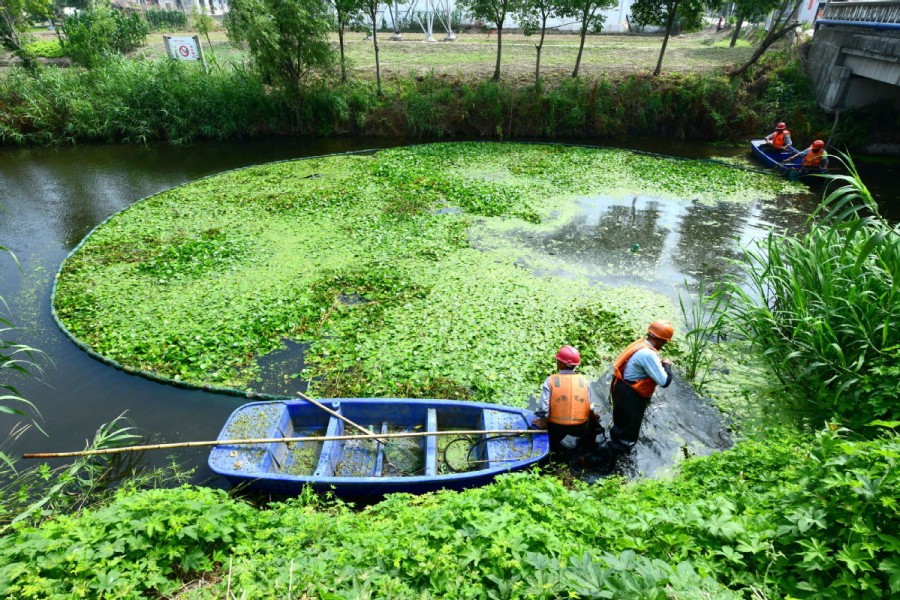Improvements being made to nation's water quality

Volunteers and sanitation workers clean up a river in Hai'an city, Jiangsu province, June 14, 2022. [Photo/IC]
China made marked progress in controlling water pollution last year, with discharges of major water pollutants continuing to decline, according to the Ministry of Ecology and Environment.
China saw 87.9 percent of its surface water rated as being of fairly good quality last year, up by 3 percentage points from 2021, said Huang Xiaozeng, head of the ministry's department of water ecology and environment.
The quality of about 0.7 percent of the country's surface water remained below Grade V, the worst quality, down by 0.5 percentage points.
Under China's six-tier quality system for surface water, the quality of water is considered as being fairly good if it reaches Grade III and above.
The quality of water in the trunk of the Yangtze River, Asia's longest watercourse, has stayed at Grade II for three straight years, Huang continued.
In the entire Yangtze basin, he said, 98.1 percent of national monitoring stations reported fairly good water quality last year, up by 1 percentage point year-on-year.
The achievements occurred thanks to a series of actions the country has taken in the basin.
The ministry has located over 60,000 sewage outlets that discharge into the Yangtze trunk, nine of its major tributaries and Taihu Lake, he said. To date, it has found the sources of sewage in 90 percent of the outlets and addressed violations in more than 20,000 of them.
Measures were also rolled out to ramp up the treatment of wastewater in industrial parks, as well as to enhance the management of tailings ponds in mines and the phosphorus sector, he said.
Rectification, for example, has been completed in 843 of the total 1,137 tailings ponds found with violations in the Yangtze basin. "We will keep a close eye on the rest of the ponds with violations to ensure that all of them will be adequately rectified," he said.
Despite the progress, he said there are still some lingering problems in the Yangtze basin.
Due to the lack of a sound cross-department coordination mechanism, for instance, little synergy has been created as different government bodies strive to beef up Yangtze conservation, he noted.
Still troubled by the bloom of blue-green algae, he said, some key lakes in the Yangtze basin are yet to see the natural balance of their water ecosystems restored.
Huang has also highlighted the ministry's efforts to address black and odorous water bodies as an environmental problem on people's doorsteps that affect their vital interests.
In 2022, 40 percent of such water bodies in county-level cities across the country were improved, he said, without disclosing the total number of such water bodies in these cities.
He said the ministry will resort to satellite remote sensing and unannounced visits to enhance its supervision over the treatment work of local governments.
For those cities with poor performances in collecting wastewater for disposal or direct wastewater discharge, the ministry will notify them with warning letters and also ask local provincial authorities to better play their roles in guiding them in the treatment work.
"We will also enhance information disclosure. We established a good mechanism to make public information concerning the treatment of black and odorous water bodies. We will further improve the mechanism to facilitate public supervision," he said.
























